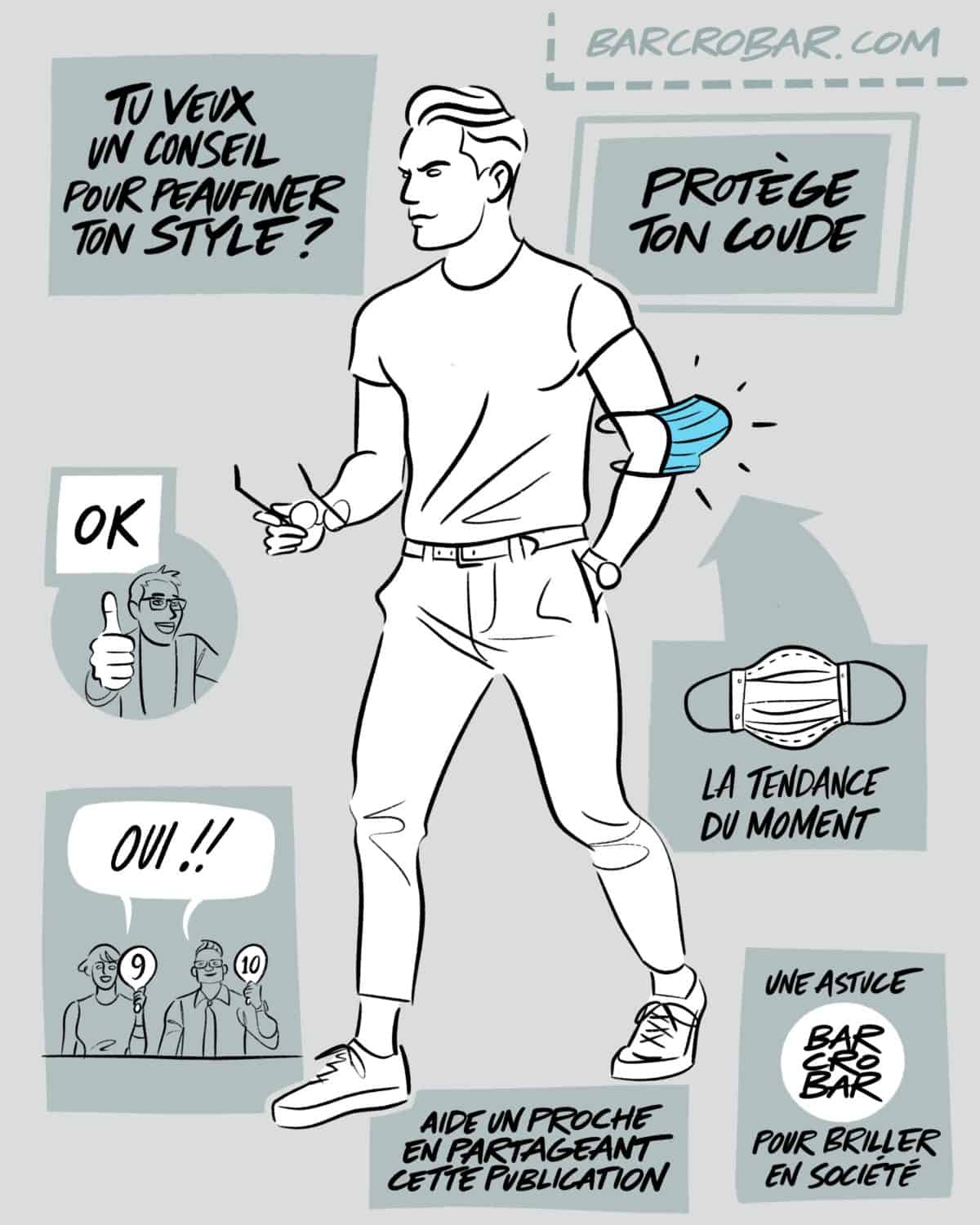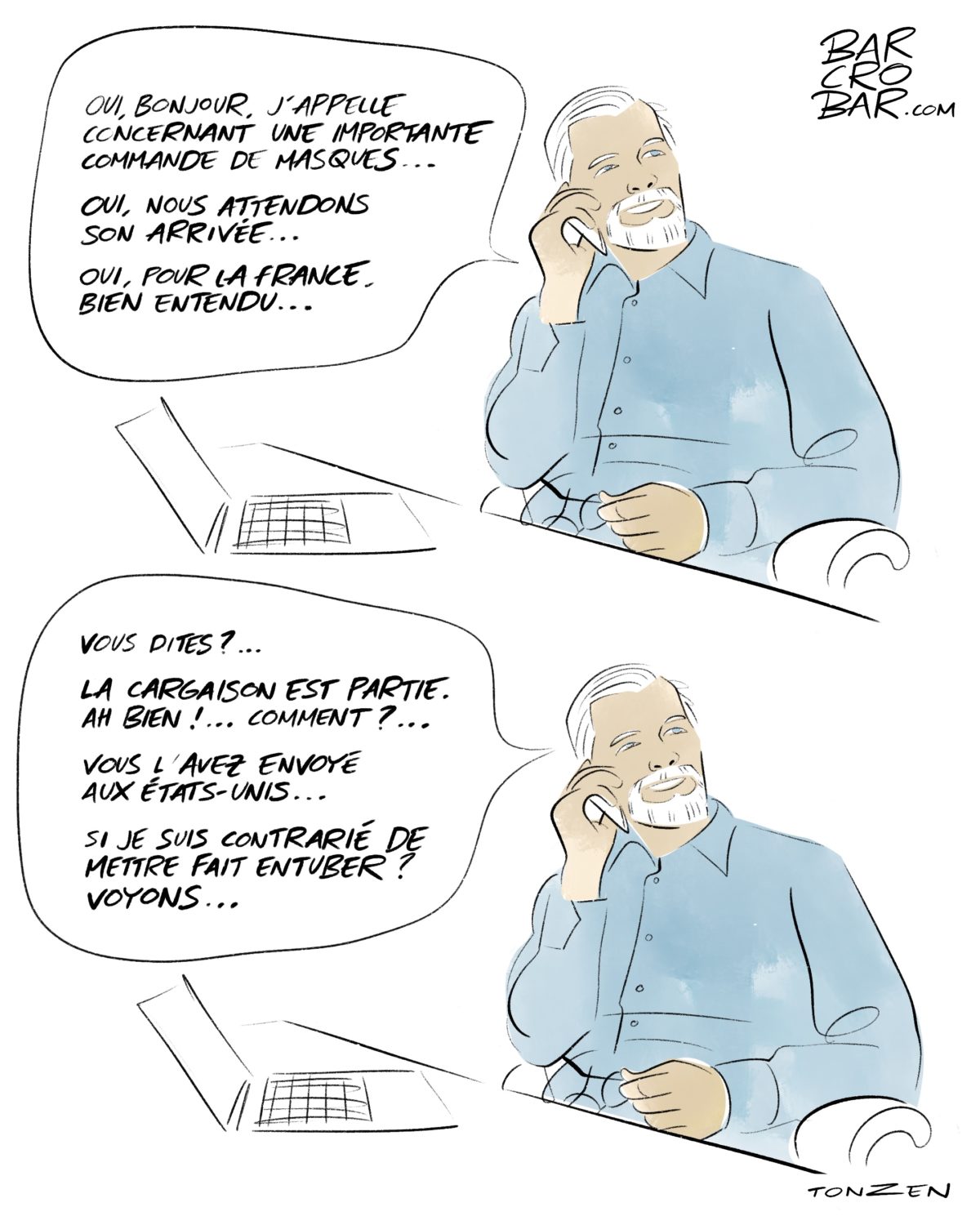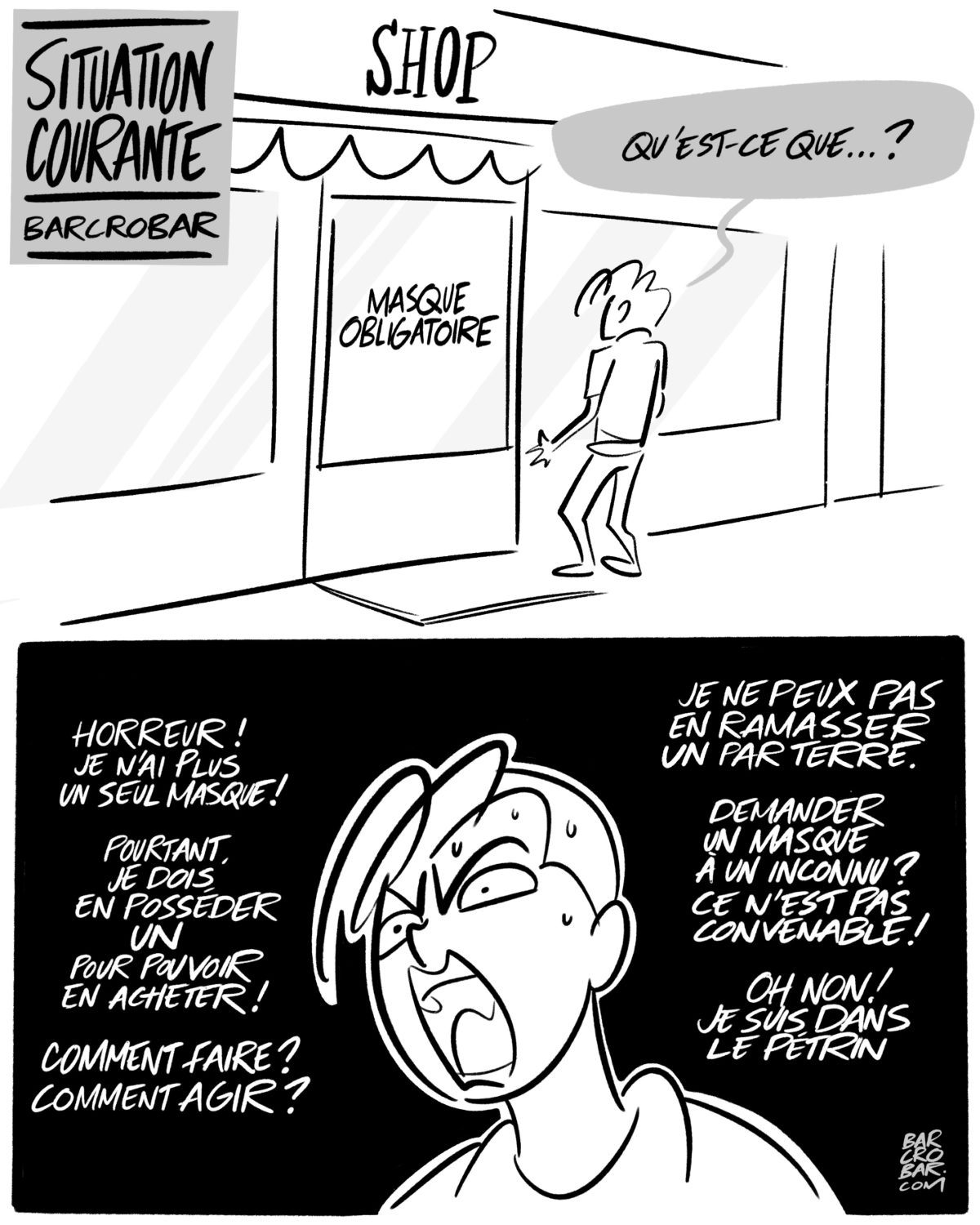Tag: mask
Would you like some advice on perfecting your style?

In France, it will be compulsory to wear a mask in enclosed public places from "next week".
French Prime Minister Jean Castex said on Thursday that the measure would come into force on 1 August.

The decree making it compulsory in France to wear masks in enclosed areas open to the public will come into force "next week", French Prime Minister Jean Castex announced to the Senate.
"We were planning for these provisions to come into force on 1 August", said the Prime Minister. "I understand that this deadline was too late (...) so the decree will come into force next week", he said during his general policy statement to the senators.
"An effective prevention and protection measure".
"Wearing a mask is an effective preventive and protective measure, along with observing barrier procedures", he stressed.
Emmanuel Macron's announcement on 14 July that it would be compulsory to wear a mask in "enclosed public places" from 1 August had pleased those who advocated this measure, but they were calling for it to be applied without delay, including in the workplace.
Jean Castex pointed out that "in so-called professional premises, this implies a change in the health protocols governing the activities concerned".
By APF LE TEMPS
Masks ordered by France bought back "on the tarmac" by the Americans
Some of the millions of masks ordered in France from China will finally be shipped to the United States...

Masks ordered in China by France are being bought back by Americans on the tarmac of Chinese airports from which the delivery planes are due to depart, which then head for the United States instead of France, the President of the Grand Est region, Jean Rottner, regretted on Wednesday.
"It's complicated, we're fighting 24 hours a day" to get the masks delivered, Jean Rottner told RTL. "I myself have a small unit at regional level that is working flat out with the sponsors to win these contracts. And indeed, on the tarmac, the Americans come up with the cash and pay three or four times the orders we have placed, so we really have to fight. And I was very happy to see this aircraft arrive here last night", he added.
The President of the Provence-Alpes-Côte d'Azur region, Renaud Muselier, has also heard of such a practice by American buyers: at a meeting between the regional presidents, "a regional president explained to us that his order for masks had been stolen from him at the airport itself, by the Americans, who paid three times the price, in cash. But I won't give you the name of the region or the number of masks ordered", said Renaud Muselier.
It's an incredible obstacle course
To collect an order for four million masks, which had been ready since Saturday, the Provence-Alpes-Côte d'Azur Region had "finally decided to go through Ceva, the logistics subsidiary of CMA-CGM", a French charter shipping company based in Marseille, explained Mr Muselier. "At least I can be sure that nobody is going to buy them from me on the tarmac. Normally, they're on the way to the airport. But I'm still as cautious as a Sioux, it's an incredible obstacle course" from a logistical point of view, he noted.
Two million surgical masks ordered from China by the Grand Est region were delivered to Basel-Mulhouse airport on Tuesday night. Jean Rottner, himself an emergency doctor, ordered a total of five million masks, financed by the regional budget. The Grand Est was the first region to receive its own order of masks, in addition to national orders.
Emmanuel Macron, who has been criticised for the shortage of masks in France, promised "full independence" for mask production by the end of the year during a visit to a manufacturing plant in Anjou on Tuesday.
The United States, which has been slow to take measures to halt the spread of the coronavirus on its territory, is also looking for masks.
source: https://www.vosgesmatin.fr/
The Coronavirus is tested to find out if it will make it through the summer?
The spread of the epidemic could be slowed by heat and humidity. Scientists are now trying to find out.

Many viruses are not heat-resistant, which is why the flu season, for example, is winter. We had hoped that this would also be the case for the new coronavirus, but the fact that it has still spread in regions where the temperature is over 30°C, such as Singapore, is not a very encouraging sign.
However, according to a Chinese study, warm temperatures could at least slow it down, noted ZME Science. A statistical study of 4,711 cases of people infected with SARS-CoV-2 throughout China showed that the higher the temperature and humidity, the less the epidemic spread. If confirmed, this would be good news for the northern hemisphere in the months ahead, and bad news for the southern hemisphere.
Test on a harmless replica
But all this is based on probability. To find out more scientifically, a study has just been launched at the University of Utah in the United States. The researchers are going to test the resistance of the coronavirus to heat, humidity and other environmental changes. To do this, they will recreate synthetic particles of the coronavirus, but without its genome, so that it cannot infect anyone or multiply. The idea is really to see how the physics of its spread can be affected.
As with influenza, SARS-CoV-2 travels between humans in the form of airborne mucus droplets. Observing how these droplets react to temperature and humidity should give us an idea of whether or not the virus will slow down as the warmer weather sets in. And anything that alters the structural integrity of the coronavirus is a good thing. "This is not a vaccine. It won't solve the crisis, but we hope it will inform future policy decisions," said Michael Vershinin from the university's Department of Physics and Astronomy.
Multidisciplinary centre
While previous viruses have been studied for their means and speed of propagation, the influence of climate has rarely been considered. The laboratory at the University of Utah, which has just received a grant of 200,000 Swiss francs to carry out this research, has years of experience in studying viruses on a nanometric scale. In addition, it is part of the University's Centre for Cell and Genome Sciences (CCGS), where physicists, chemists and biologists work together. As a result, interdisciplinary collaboration can easily be set up if required.
Michel Pralong
source: Le Matin

